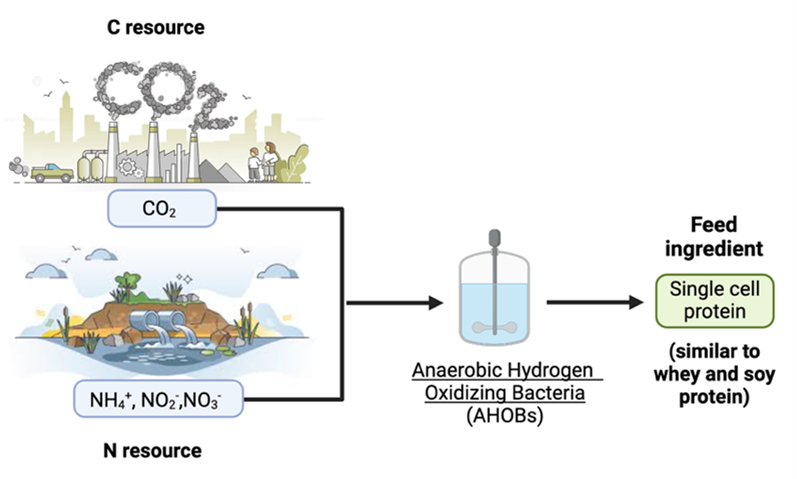The project develops sustainable single-cell protein (SCP) production using hydrogen-oxidizing bacteria (HOB) for CO2 fixation and nitrogen recovery under anaerobic conditions. It innovatively replaces oxygen (O2) with nitrate (NO3–) in bioreactors, enhancing efficiency, reducing energy requirements, and addressing global food security and environmental sustainability challenges.
The economic implications of this project are substantial, particularly in reducing operational costs associated with traditional aeration systems in wastewater treatment plants. These systems typically consume up to 60% of a plant’s energy budget. By eliminating the need for aeration, the project could potentially save a typical plant around $500,000 annually. Additionally, the production of SCP could generate significant revenue. With SCP priced at approximately $2,070 per metric ton, a modest production rate of 1,000 metric tons per year could yield revenues of $2.07 million. This dual benefit of cost savings and revenue generation underscores the project’s economic viability.
Environmental benefits are also a major component of the project. The system’s design aims for substantial reductions in greenhouse gas emissions compared to traditional animal feed production methods like fishmeal and soybean meal. By utilizing renewable energy sources and replacing oxygen with NO3– wastewater in the process, the project could achieve even greater reductions in carbon intensity. Moreover, the land efficiency of SCP production is significantly higher than that of traditional crops like soybeans, which typically require much more land to produce equivalent protein amounts. This efficiency can free up substantial land for other uses or natural restoration, enhancing environmental sustainability.
Societally, the project aims to enhance food security, especially in remote and rural areas where traditional protein sources are often costlier and riskier due to transportation and spoilage. By locally producing SCP, the system offers a resilient and sustainable alternative to these communities, potentially transforming local food systems and reducing dependency on imported feeds.
Project team
Project funding

